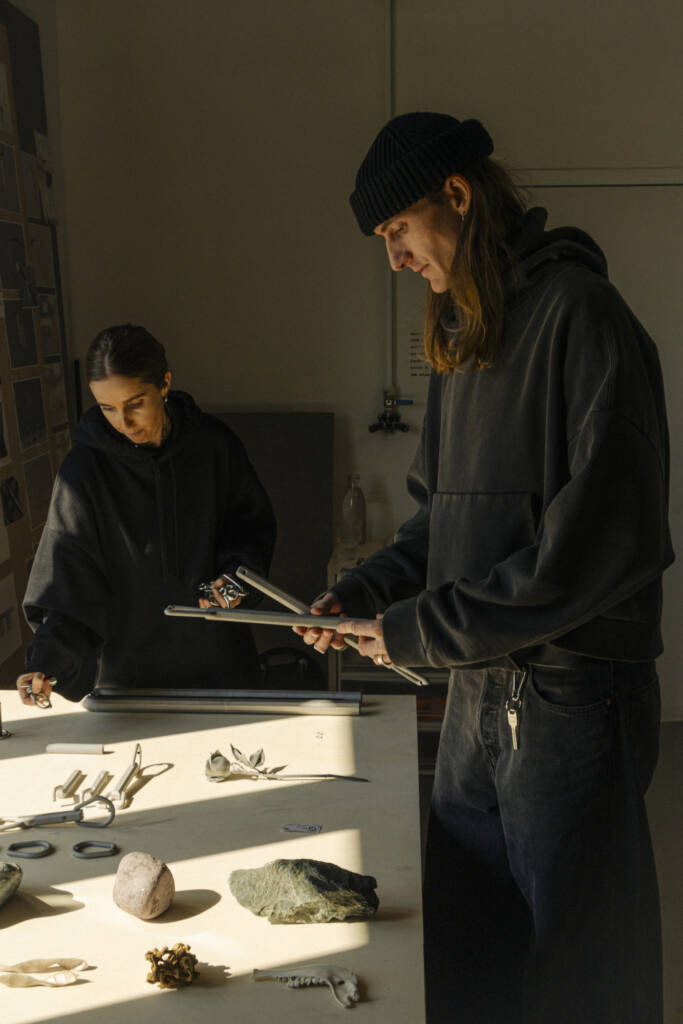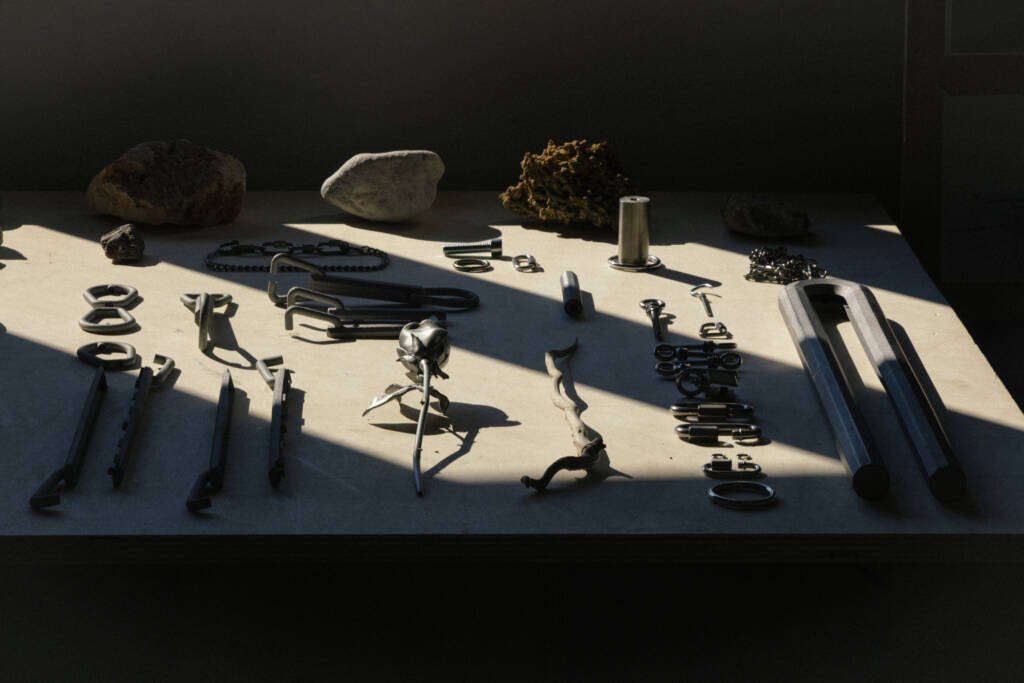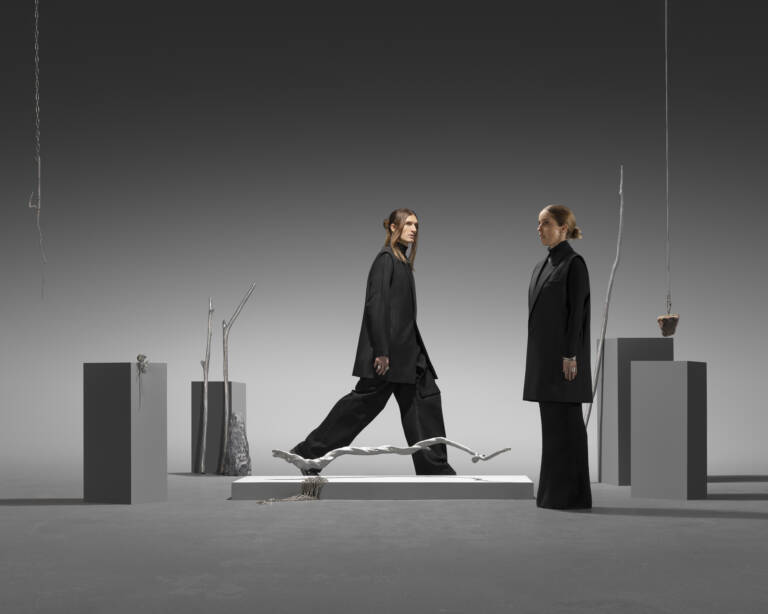

BTS content, 2025
Photography by NICKY RODING
New Zealand–born, Paris-based design duo Alexandra Batten and Daniel Kamp have once again challenged the idea of functional sculpture with their current solo exhibition, From a Distance, at Carpenters Workshop Gallery Paris. Drawing on field research in Aotearoa and production experiments in Hong Kong and Paris, the show unites 3D-printed aluminium, rough-cut marble and scented volcanic stones to explore memory, place and ecological futures. Hot on its heels is the much-anticipated Titan-Mercury launch – part of their Titan seating series – which debuted earlier this year. And now? As they prepare to expand their practice with upcoming international gallery shows and high-profile collaborations, Batten and Kamp continue to fuel conversation around nature, technology and our collective future – and tell us their secrets in this conversation.
hube: Your path has taken you from New Zealand’s vast natural landscapes to the dynamic urbanity of Hong Kong and now Paris. In what ways have these distinct environments reshaped your design sensibilities and artistic narrative?
Daniel Kamp: The more time I spend in these three places, the more I realise just how disparate they are. They form three global extremes of a triangle spanning East, West and South. The differences between them are endless – big, small, dense; green, beige, neon; slow and history-bound, fast and future-facing; cultured, untouched… the list goes on. These differences can make them seem incompatible, but we’re starting to find a way to operate within the triangle that makes them complementary.
New Zealand values authenticity above all else, Hong Kong values newness, and Paris values sophistication. So New Zealand grounds us in reality, Hong Kong gives us room to experiment, and Paris forces us to refine. Our life and our work bounce around in this triangle. It’s an exceptional privilege. Between these three places, we have more than we could reasonably ask for to nourish our practice.
h: Your work consistently blurs the boundaries between functional furniture and sculptural art. How do you reconcile the precision of design with the unpredictability of artistic expression in your practice?
DK: I don’t think we blur boundaries because the boundaries are already blurred. I used to believe that we worked in the space between the two disciplines; now I realise there is no gap, no line – rather, there is a pretty big and conveniently less-explored overlap. Working in that intersection allows us to be simultaneously at the periphery of both fields. It’s the closest we can get to seeing both fields objectively while still being inside them. I didn’t answer the question.

